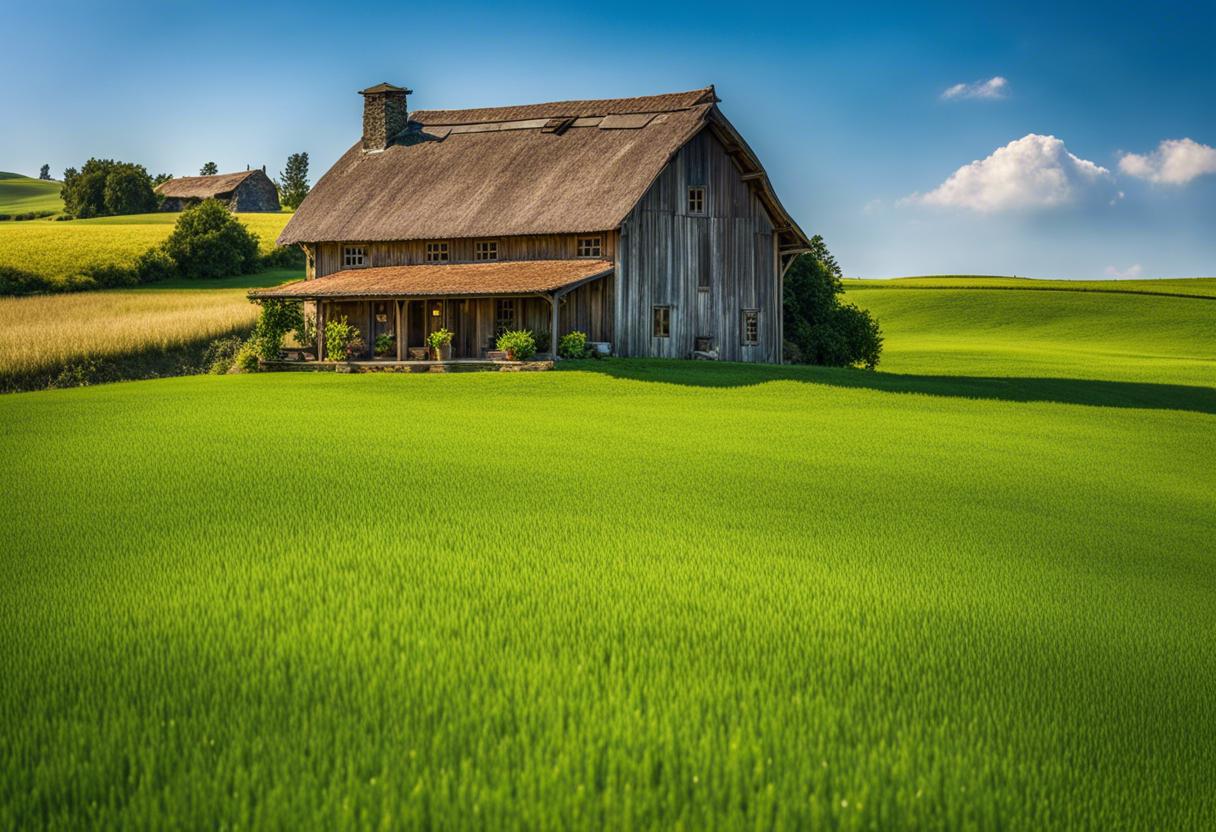Secluded in North Co Kilkenny, a humble farmhouse and its adjacent structures are under transformation. Brown Mountain Diamond, a creative venture owned and managed by artists, declares its ambitious aim to establish a pioneering model for the operation of arts spaces within the countryside of Ireland. The facility, a three-bedroom house, barn, and additional outbuildings, is in the process of restoration as workspaces by its initiator and owner, visual artist Carl Giffney, together with Eimear Malone, who joined to aid in its progression.
During my visit, I meet with resident artist Vera Ryklova, known for her work in photography, video, installation, and performance. The centre is preparing to entertain an electronic music showcase later featuring local Kilkenny DJs and producers. Throughout the year, additional artists, such as Aifric Prior Beliere and Sarah O’Brien, have also resided here. Sara Damaris Muthi helps coordinate the centre’s visual arts.
Focusing primarily on visual art (roughly 65%), Giffney explains that Brown Mountain Diamond also embraces every aspect of sound – from music to spoken language, encompassing various genres and even social gatherings. Open musical jam sessions within the centre’s sitting room with a plethora of musical instruments, invite different kinds of people and serve to enhance community spirit. The living room is teeming with music makers, such as dual drum kits, copious ukuleles, and even a mini-organ. This inviting atmosphere has seen fruitful results, with many unlikely attendees, not just performers but also silent spectators, having walked through its doors.
In 2019, Giffney obtained the property, realizing his capacity to acquire a property of low investment but high potential. After years of travelling, living, applying for residencies, and creating art in different foreign countries, such as Finland, Serbia, Estonia, Holland, and Scotland, Brown Mountain Diamond became his base. Malone states that it is now a sort of antidote for Giffney, where artists pursue residencies at his place, and he becomes the host, a stark contrast to his previous nomadic lifestyle.
According to Giffney, there’s a multitude of farmhouses with a small tract of land, and they’re demonstrating the achievable potentials of these spaces.
The boom during the Celtic Tiger era led to a proliferation of district art centres throughout Ireland, even as Dublin grappled with a chronic arts infrastructure predicament, notably with regard to artists’ studios and workplaces. Brown Mountain Diamond epitomises what can potentially materialise irrespective of location, given a robust vision, abundant creativity, and an artist-driven, self-initiated approach. One can’t help but contemplate the immense possibilities if such undertakings received financial backing, enabling socially beneficial art to thrive in unanticipated locales.
Upon graduating from the National College of Art and Design in 2007, Giffney, alongside a band of fellow artists, set up the Good Hatchery, a creative space located in northern Offaly that functioned from 2007 to 2016. Giffney fondly recalls those years as an exhilarating experience. Giffney and Ruth Lyons managed the venue for the majority of its operational years. He jests that the entire venture could have probably been accomplished in eight years instead of nine.
A pivotal moment in Giffney’s career was an Erasmus exchange programme he and a few NCAD comrades embarked upon to Slovenia. Giffney and the other three art students, all women, chose to live separately to broaden their experience. While the capital Ljubljana is considerably smaller than Dublin, what Giffney witnessed there would markedly influence his perspective.
In Ljubljana, the inspiration stemmed from places like Metelkova, an independent social centre, and a unique invite to repurpose an old Soviet-era bicycle factory into a cultural centre. Setting foot in Ireland, such ideology is a firm departure from the traditional way of thinking.
Despite the original expectations, a large crowd surged into the site when the gates were unlocked. The authorities responded by not only enabling the building’s water supply but also by arranging round-the-clock security at the gate. In a span of a mere few days, the towering seven-storey ex-manufacturing building, which was larger than the NCAD that previously operated as a whiskey distillery, was transformed into a cultural centre. The newly formed team worked tirelessly to clean, repair, paint, wire and beautify the area. Everyone seemed to know their role to perfection.
Over at Brown Mountain Diamond, a handful of smaller outbuildings are next on the agenda. While to most they might appear as abandoned structures, Giffney and Malone envision a hidden treasure trove of potential – like crafting a workshop for woodworking. They are already accumulating windows for a barn remodelling project. Remarkably, a section of the barn has been repurposed successfully into a chic venue equipped with a top-notch sound system, and even a former concrete milking stall has been revamped into a DJ booth, much to the surprise entertainment of the surrounding cattle.
Giffney stresses the importance of nurturing emerging small enterprises, saying their contribution to culture should not be underestimated. Echoing his sentiment over some apple cake and tea at the farm kitchen table, Malone concurs, with a house cat casually curled up on a cushion by the range. She believes it could take several years for their innovative approach to demonstrate its feasibility. However, once established, she sees it as a model that could inspire rural landowners across the country. Rather than drawing comparisons to larger operations like Visual in Carlow which might seem daunting, they’re demonstrating quite effectively that their vision is not only attainable but within easy reach.

